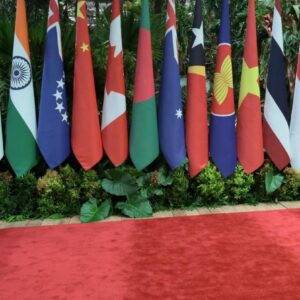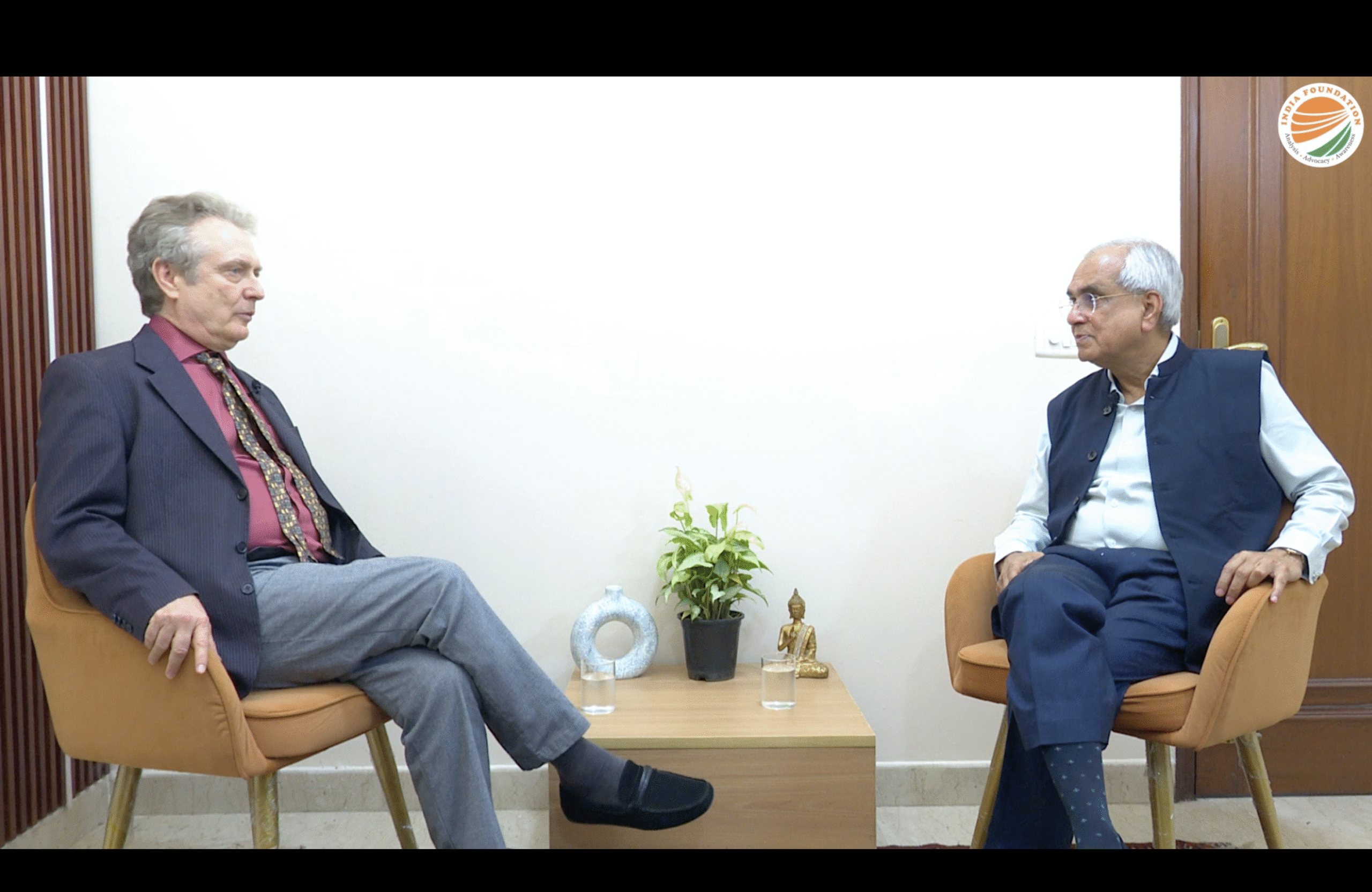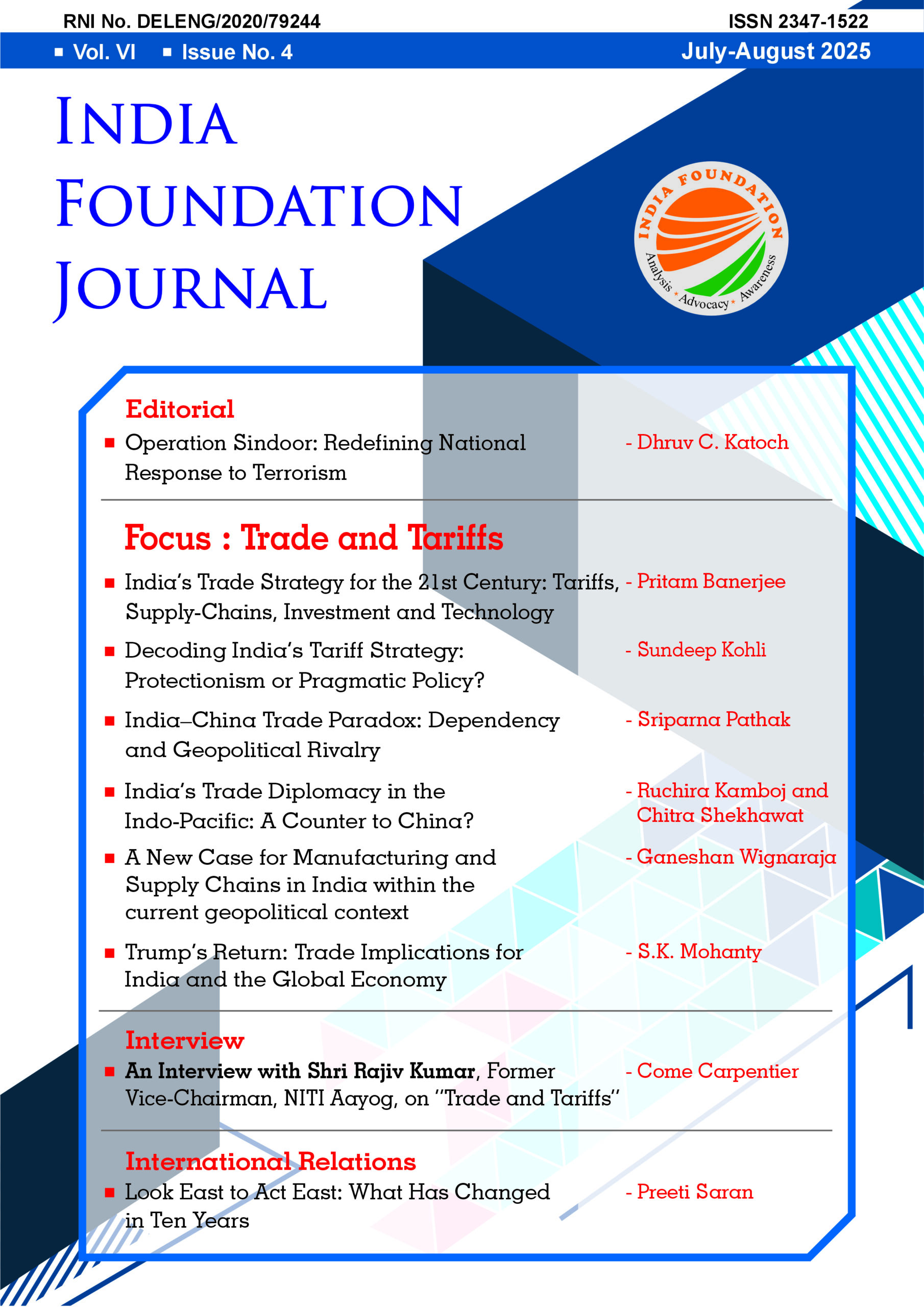“Friendship is a flowing river”, Prime Minister Sheikh Hasina Wajed quoted Mexican Nobel Laureate Octavio Paz in her Op-Ed article[i] in an Indian daily to describe India-Bangladesh relations. There is no doubt that Indo-Bangla friendship streams like a river, overcoming all the obstacles. Neighbours that share a porous land border of 4096.7 km, 54 rivers, culture, language and history, have always attempted to find a way to make things work. The two countries have genuine concerns for maintaining their fraternal relationship. With Awami League leader Hasina’s fourth term as the PM, Indo-Bangladesh bond remains strong and stable. Interesting enough, Awami League and BJP, the two incumbent parties, have a similarity in their party symbols. The boat of Awami and the lotus of BJP – both are aquatic.
Bangladesh has always been at the core of India’s neighbourhood policy. Dhaka’s foreign policy reflects the principles of Non-Aligned Movement (NAM). Dhaka is a beneficiary of Modi’s Act East policy – a revised, reviewed and renamed framework of Look East policy. In addition to South Asian Associationfor Regional Cooperation (SAARC), the regional clubs like Bay of Bengal Initiative for Multi-Sectoral Technical and Economic Cooperation (BIMSTEC), Bangladesh, Bhutan, India, Nepal Initiative (BBIN) and Bangladesh, China, India, Myanmar Forum for Regional Cooperation (BCIMforum) have presented additional opportunities to engage Dhaka and Delhi. Prime Minister Modi and Prime Minister Hasina Wajedvow to maintain the upward trajectory of Indo-Bangla ties.
High-level Visits and Transactions
The present India-Bangladesh relations are an outcome of highly transactional diplomacy. The two neighbours have inked several deals in recent years to strengthen bilateral relations.
Shirin Sharmin Chaudhury, the speaker of Bangladesh Parliament, attended Prime Minister Narendra Modi’s swearing-in ceremony on May 26, 2014. During his maiden visit to Bangladesh in June, 2015, PM Modi settled the forty-one-year-old boundary dispute. As per the Land Boundary Agreement 1974 and protocol of 2011, 51 erstwhile Bangladeshi enclaves in India and 111 erstwhile Indian enclaves in Bangladesh were physically transferred to the other country. India lost 10,000 acres of land in that land swap deal, but Narendra Modi won the hearts of thousands of Bangladeshis. In his hour-long address at Dhaka University, the Indian premier read out a few lines in Bengali and emphasized on Bangladesh’s successes on the social and economic fronts. Mamata Banerjee, Chief Minister of West Bengal, also joined the two leaders in Dhaka. The three leaders flagged off two Bangladesh-India bus services. Modi extended a fresh $2 billion Line of Credit (LoC) support for 15 projects to Bangladesh. Dhaka heaved a sigh of relief hearing the announcement of full disbursement of $200 million. The two South Asian supremos inked 22 agreements on different areas like cooperation in maritime safety, curbing human trafficking and fake Indian currency notes. Bangladesh made a few important announcements to appease India. Access to Chittagong and Mongla Ports made India happy. PM Hasina praised Modi for his charismatic role and Modi appreciated Sheikh Hasina for her farsightedness. The two premiers raised the global issues like climate change. PM Modi called on President Md. Abdul Hamid, former PM and opposition leader Khaleda Zia and many other dignitaries.
PM Hasina reciprocated Prime Minister Modi’s state visit. She has visited India five times since 2015. She got a warm reception – whenever she arrived in India. She attended the BRICS-BIMSTEC Goa summit in October 2016. A year later, Delhi hosted Prime Minister Hasina and extended an additional $4.5 billion third LoC support to Bangladesh in 2017, following China’s $24 billion LoC assistance. She came to West Bengal on a two-day official visit at Modi’s invitation in 2018. Hasina and Modi inaugurated the Bangladesh Bhavan, a Rs. 25 crore project of Bangladesh, at Shantiniketan in West Bengal. Chief Minister Mamata Banerjee had a tête-à-têtewith her. Kazi Nazrul University in West Bengal conferred an honorary D.Litt. degree on PM Hasina.
External Affairs minister Sushma Swaraj,her deputy VK Singh, Home Minister Rajnath Singh, Commerce minister Suresh Prabhu and other heavy weight leaders travelled to Bangladesh and announced many initiatives. President Md. Abdul Hamid,Abul Hassan Mahmood Ali, the then foreign minister of Bangladesh, visited India and made important announcements.
Trade
India surrounds Bangladesh on three sides plus there is a long maritime border. The two countries are connected through all modes of transport – land, air and waterways. The connectivity and transport facilities have propelled the growth of bilateral trade. Trade is the main driver of Dhaka’s foreign policy dynamics. The two burgeoning economies have fulfilled each other’s’ commercial requirements and ultimately become trade partners. The nation of 170 million is the largest regional trading partner of India. The trade between the two neighbours crossed $9.3 billion mark in 2017-18 financial year[ii]. Under the South Asian Free Trade Area (SAFTA) agreement, India allows duty and quota free entry to most of the Bangladeshi goods.
Bangladesh is the second largest garments exporter after China. India traditionally imports raw jute and jute products, apparels, hosiery products, knitwear, leather shoes, fruit juices, jams and pickles, fish from Bangladesh. In the last five years, trade between Bangladesh and India has soared. Informal and illegal cross-border trades remain unaccounted. In spite of the security checkups, border patrolling and hi-tech surveillance of Border Security Force (BSF) and Border Guards Bangladesh (BGB), smugglers are expanding their empire.
The smuggling of fake Indian currency, cattle, gold, cough syrup and other goods has reduced in recent years – especially after Hasina and Modi’s arrival in power. Border-haats are set up in Tripura and Meghalaya to promote local businesses. The Economic Times reports, “The inflow of foreign direct investment (FDI) to the country has almost tripled during ruling Awami League’s nine years in office under Hasina.”[iii]
PM Hasina accompanied a business delegation, during her India visit in 2017. Federation of Indian Chambers of Commerce and Industry (FICCI) and Federation of Bangladesh Chambers of Commerce and Industries (FBCCI), the two industrial ombudsmen of India and Bangladesh raised a six-point agenda to boost bilateral business ties as well as investment. They proposed to set up a Joint Task Force on Tariff and Non-Tariff Barriers and a Joint Task Force to promote business and investments in several sectors of Bangladesh. India-Bangladesh Chamber of Commerce and Industry was formed to boost the bilateral trade.
India’s newly implemented unified tax system GST has benefited the Bangladeshi entrepreneurs. Indian enterprises relish the taste of success in several business sectors in Bangladesh. Indian and Bangladeshi Inc inked a deal worth $9 billion to invest in Bangladesh. Reliance Power signed a deal worth $1billion with Bangladesh’s Ministry of power, energy and mineral Resources for the first phase of the 3000 MW power project at Meghnaghat in Bangladesh. Energy behemoth Adani Power signed an agreement worth $2 billion to supply 1600 MW of power from its Jharkhand plant to Bangladesh[iv]. Big Indian enterprises like Indian Oil Corporation, ONGC Videsh, Numaligarh Refinery Limited, Petronet LNG Ltd have significant presence in the oil and gas sector of Bangladesh.
Defence Diplomacy
Bangladesh is a success saga of defence. Mukti Bahini, with the help of Indian forces, heralded a new era in 1971. Bangladesh still expresses her gratitude to India for her liberation. During her 2017 India visit, PM Sheikh Hasina met with the families of seven Indian soldiers who died in the 1971 Liberation War. A cheque of Rs 5 lakh
Bangladesh and India, both are victims of terrorism. The two nations have not come out of the shock of deadly attacks on them. There are similarities between the attacks in Mumbai and Artisan bakery in Gulshan, Dhaka’s diplomatic enclave.
Modi and Hasina government have come forward to fight terrorism. The two leaders are hailed for remarkable success in strategic co-operation. The AwamiLeague government has been assisting India to crack down on northeastern militants. In recent years, India’s defence relation with Bangladesh is not competitive. The two defence forces co-operate and collaborate each other even though there are serious allegations against B[v]. During Awami League’s tenure, Bangladesh has shown a genuine concern for regional security. BGB (erstwhile BDR), Bangladesh Police, and Rapid Action Battalion (RAB) took several initiatives to curb terrorism, illegal trades and smuggling. BGB catches up with BSF, conduct flag meetings – whenever the situation demands. Policing the border is now easier through direct engagement of BGB and BSF.
India has provided expert training, technical and logistic support to Bangladesh defence forces. In a friendly gesture, Indian Air Force aircraft airlifted 25 Bangladesh Army officers and their spouses from Dhaka to New Delhi in 2018. A coordinated patrol (IN-BN CORPATby two naval forces was kicked off in last year. Indian forces reached Bangladesh with aids during severe natural disasters. Indian Navy’s rescue operation in 2017 after the cyclone Mora is the most recent example. Apart from BSF and BGB meetings, the forces of both the countries exchange communications and participate in tactical drills. Hosted alternately by the two countries, Exercise Sampriti is an important bilateral defence cooperation. The last edition of Sampriti was held in March 2019. The 36 East Bengal Battalion of Bangladesh and 9th Battalion of the Rajputana Rifles took part in the round held at Tangail, Bangladesh. The two countries have huge contributions in UN Peacekeeping operations.
Two agreements were signed in 2017 on co-operation in the peaceful use of nuclear energy and cooperation in the regulation of nuclear safety – during PM Hasina’s stay. Besides, an inter agency agreement was signed between the Global Centre for Nuclear Energy Partnership of India and Bangladesh Atomic Energy Commission. India’s Defence Services Staff College and Defence Services Command and Staff College of Bangladesh signed an MoU. An agreement was signed between the National Defence College of Bangladesh and India’s National Defence College. Prime Minister Modi extended a separate LoC support of $500 million to Bangladesh for purchasing defence hardware while Hasina was in India on a state visit in April, 2017.[vi]
Most recently, in March 2019, in a video-conference with PM Modi, Hasina condemned Pulwama terror attack and clearly stated about her government’s zero tolerance policy against terrorism. In the video-conference, she also asserted that Indo-Bangladesh relations have now become “a role model of good neighbourliness for the rest of the world.”
Diplomatic Outreach
The two nations have engineered give-and-take diplomacy. Dhaka’s “friendship to all, malice to none,” policy goes well with the South Block doctrine. Even though, BJP’s parliamentary victory was a matter of concern for the Islamic Republic, the two governments shook hands and became friends.
Modi government has taken a few remarkable initiatives to please Dhaka. A road in Delhi has been named after Bangabandhu. A Hindi edition of Sheikh Mujibur Rahman’s autobiography was released during Hasina’s state visit.[vii] A biopic of Bangabandhu, jointly produced by two countries, will be out by 2021. Several services have been started to tribute the Muktijoddhas such as five-year multiple entry visa for all Muktijoddhas and free of cost treatment for them.
India is literally empowering her partner Bangladesh. In addition to other aids under the ITEC programme, India is supplying 1.16 gigawatts of power to Bangladesh. The construction of India-Bangladesh Friendship Pipeline from Siliguri to Parbatipur is funded by India. India has contributed in road, water and railway construction, connectivity and other areas in Bangladesh. In the last seven years, Bangladesh has received three LoCs worth $8 billion from the Indian Government.
A Hindi chair was set-up in Dhaka University in January, 2017[viii]. ICCR is the bridge between two societies. India’s Yoga-diplomacy is drawing good responses from Bangladesh.More and more visas are being issued by both the governments. More patients from Bangladesh are now coming to Kolkata, Mumbai, Chennai, Delhi and Bangalore for treatment. While in Dhaka in 2018, Rajnath Singh and his Bangladeshi counterpart Asaduzzaman Khan Kama inaugurated world’s largest Visa Application Center.[ix] In Chennai, Bangladesh is opening her sixth diplomatic mission in India. The workers, toiling in India, hugely contribute to the economy of Bangladesh. Bangladesh receives almost half amount of its total remittances from her workers in India. Indian workers on the other side remit million rupees from Bangladesh.
Like their citizens, the two states have great affection for each other. Bangladesh boycotted the 19th SAARC summit to protest Pakistan. Dhaka stood by India’s side in most of the cases – but the Sinophobia is irritating New Delhi. After Xi Jingping’s historic Bangladesh visit, Beijing has come closer to Dhaka. China is now a strategic partner and largest arm supplier of Bangladesh. Bangladesh is also the second largest destination for Chinese investment under the Belt and Road Initiative.
If the relation between the two governments deteriorates, the brotherhood of Islamic and separatist terror outfits will be stronger. Without Dhaka’s support, it will be very difficult for Delhi to defeat the insurgents and militants. On the other hand, Bangladesh is a den to ferocious species like Al-Qaeda,Jamaatul Mujahideen Bangladesh (JMB), Harkat-ul-Jihad-al-Islami Bangladesh (HUJI-B). The ISIS footprint in Bangladesh, terrifies all the South Asian states. After the Artisan attack, Pulwama terror attack and most recent carnage in Sri Lanka, South Asia should take the emerging security threats seriously.
India’s internal policy immensely affects Bangladesh. What happens in Bangladesh, impacts on her external relations. While the daughter of democracy at the helm of political affairs, critics say, the political plurality of Bangladesh is under threat. Religious minorities, freethinkers, activists and ahamadias are living in a dystopian democracy. Some Bangladeshis are relinquishing their nationalities and migrating to India and other countries.
On the other hand, New Delhi’s announcement of deporting infiltrators irked Dhaka. Teesta pact is not resolved yet as West Bengal Chief Minister vetoed. A dry and downstream Teesta affects nearly 21 million people in Bangladesh. There’s not adequate water in Teesta. If Bengal agrees to share Teesta water, people in West Bengal’s Teesta basin will suffer. While commenting on this PM Haisina said, “We sought water, but Didi (Banerjee) has given us electricity. However, we have got something.”
CM Banerjee has proposed of sharing water of Teesta’s cousin Torsa, Sankosh and Raidak. But it does not appear to be feasible. Dhaka has pulled off the proposal.A river can’t disobey the flow of politics. A river goes where the current takes her along. But in geo-politics, a set of interests leads a friendship. The two states have to ensure that their friendship continues to flow like a river.Politics not always stops at water’s edge!
(Ayanangsha Maitra is a freelance journalist, tweets @AyanangshaViews expressed are personal.)
[i] The Hindu, April 7, 2017 https://www.thehindu.com/opinion/lead/friendship-is-a-flowing-river/article17854490.ece
[ii] India proposes free trade agreement with Bangladesh, The Economic Times, Sep 26, 2018,
https://economictimes.indiatimes.com/news/economy/foreign-trade/india-proposes-free-trade-agreement-with-bangladesh/articleshow/65965232.cms
[iii] Bangladesh seeks wider investments from India, The Economic Times, September 26, 2018
https://economictimes.indiatimes.com/news/economy/foreign-trade/bangladesh-seeks-wider-investments-from-india/articleshow/65816460.cms?from=mdr
[iv] Bangladesh, India sign finance deal for Rampal plant, Dhaka Tribune, April 12, 2017
https://www.dhakatribune.com/business/2017/04/12/bangladesh-india-sign-finance-deal-rampal-plant/
[v] Why border killing has not stopped, Dhaka Tribune, Dec 27, 2017
https://www.dhakatribune.com/bangladesh/2017/12/27/border-killing-not-stopped
[vi] List of Agreements/MoUs exchanged during the State Visit of Prime Minister of Bangladesh to India (April 07-10, 2017)
https://www.mea.gov.in/bilateral-documents.htm?dtl/28360/List_of_AgreementsMoUs_exchanged_during_the_State_Visit_of_PrimeMinister_of_Bangladesh_to_India_April_0710_2017
[vii] Bengali News Article, Daily ProthomAlo, April 8, 2017
https://www.prothomalo.com/bangladesh/article/1138351
[viii] Bengali News Article, Banglanews24, Jan 10, 2017
https://www.banglanews24.com/education/news/bd/546540.details



